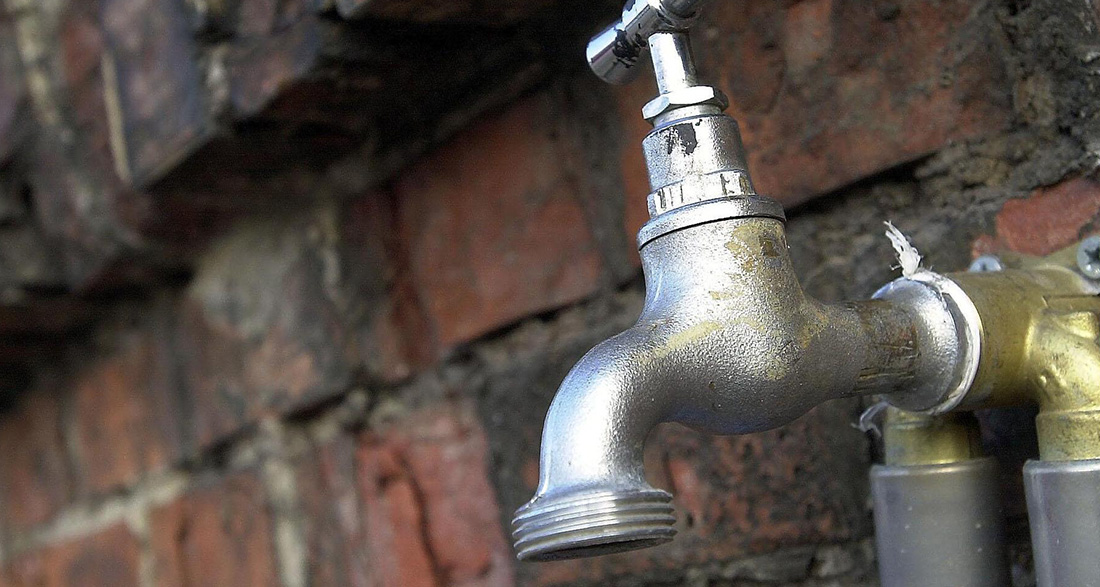In 75 years, several hundred million people could be living in areas where groundwater is too warm and no longer suitable for drinking.
The rising temperatures due to climate change not only lead to increasingly warmer oceans but also heat up soils and groundwater. By the year 2100, several hundred million people could be living in areas where the groundwater is too warm and, therefore, no longer has drinking water quality, according to a study published by German and Austrian researchers in the journal Nature Geoscience.
While the majority of the Earth’s freshwater (more than two-thirds) is locked in frozen form in polar regions and high mountains, groundwater (around 30 percent) is crucial for life on Earth. However, global warming also has severe impacts on the water below the Earth’s surface.
Groundwater Temperatures Rise by Up to 3.5 Degrees
The current study projected changes in groundwater temperature worldwide up to the year 2100 under two scenarios of global socioeconomic change. These scenarios, known as “Shared Socioeconomic Pathways” (SSP), describe various socioeconomic developments and future atmospheric greenhouse gas concentrations. “SSP 245” represents a middle path of possible future greenhouse gas developments, while “SSP 585” represents the upper extreme, with high emissions and temperatures.
The research team led by Susanne Benz from the Institute of Photogrammetry and Remote Sensing at the Karlsruhe Institute of Technology (KIT), which included Christian Griebler from the Department of Functional and Evolutionary Ecology at the University of Vienna, produced global temperature maps for groundwater at depths of five and 30 meters below the Earth’s surface. “These maps show that the highest groundwater warming rates are to be expected in areas with shallow groundwater tables and/or high atmospheric warming,” said Benz.
Assuming the SSP 245 scenario, groundwater temperatures will rise by 2.1 degrees Celsius by 2100, and by 3.5 degrees Celsius under SSP 585.
Too Warm Groundwater for 30 Million People
This has serious implications for drinking water supply because too warm groundwater cannot be safely consumed and must be boiled, for example. According to the researchers, around 30 million people are already affected by this today.
The new study shows that this number could rise drastically: Under SSP 245, 76 to 188 million people will live in areas where groundwater exceeds the highest drinking water temperature limit set by each country. Under SSP 585, this number could be as high as 59 to 588 million people. The wide range is due to spatial differences in climate warming and groundwater depth. The least warming will occur in mountainous regions like the Andes or the Rocky Mountains. This also applies to the alpine region in Austria, Griebler explained.
More Active Microorganisms Consume More Oxygen
For more detailed statements on regional development in Austria, the spatial resolution of the current study is insufficient. Griebler refers to a recent report by the Environmental Agency. According to this report, groundwater temperature trends “in large parts of Austria show an increasing trend at a low level, associated with the climate-related rise in air temperatures.” Based on ten-year data series, around 73 percent of the measurement points show a significant or slightly increasing trend in groundwater temperatures.
The consequences are far-reaching. In warmer groundwater, microorganisms are more active and consume more oxygen, throwing the entire system out of balance, emphasized groundwater ecologist Griebler. When oxygen is scarce, microbes switch to anaerobic respiration, producing dissolved iron and manganese, hydrogen sulfide, or methane. “This drastically affects groundwater quality, making it no longer easily usable as drinking water, or only after very expensive treatment,” Griebler said. Heavy metals and nutrients like arsenic and phosphorus can also be mobilized from the sediment under anaerobic conditions. This danger is particularly significant where oxygen concentrations in groundwater are already very low, such as under large cities. Vienna is one such example.
Unsealing Will Be Necessary
As a “crucial lever” for groundwater protection, the scientists point to land use. In urban areas and under large sealed surfaces, groundwater temperatures are on average at least two degrees Celsius higher than in areas with unsealed soils. “No further soil sealing and unsealing are important measures to protect groundwater,” Griebler said.

